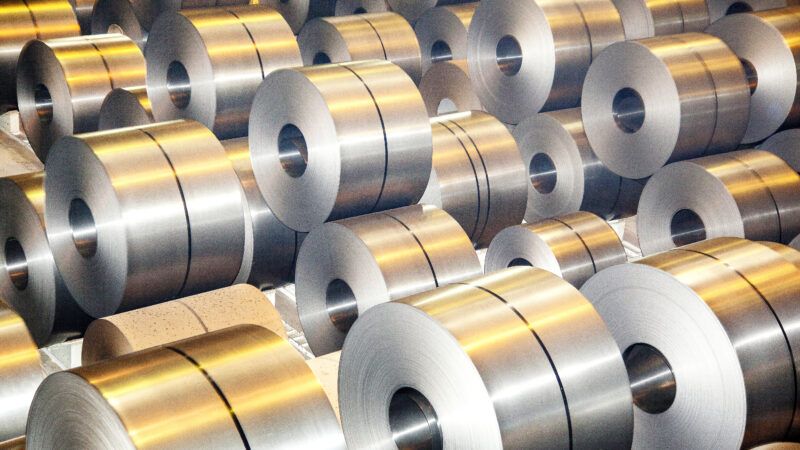Trump's New Tariffs on Steel, Aluminum Won't Help American Manufacturing
And it's not about "fairness." Quite the opposite, actually.

Near the top of an official "fact sheet" distributed by the White House on Tuesday morning, the Trump administration makes clear its rationale for imposing new tariffs on steel and aluminum imports.
The White House claims that "foreign nations have been flooding the United States market with cheap steel and aluminum" and promises that taxes on those imports will restore "fairness" to the markets for steel and aluminum.
That's about as straightforward as it could be: The Trump administration believes cheap imports are a problem and is seeking to artificially raise prices with tariffs.
Is that fair? Steelmakers and aluminum manufacturers might think so, but the potential costs will spread through dozens of downstream industries and could impact the price of goods ranging from beer cans and cars to kitchen gadgets and construction vehicles. Nucor, one of America's largest steelmaking companies, said it would raise prices just hours after the tariffs were announced.
"This is political rent-seeking at its most brazen, and it benefits the few at the expense of the many," is how The Wall Street Journal's editorial board summarized President Donald Trump's latest trade maneuver.
Indeed, tariffs on goods like steel and aluminum expose the nasty tradeoffs that protectionism creates.
The Trump administration tries to frame these tariffs as a way to defend American manufacturing against the perceived threat of cheap foreign goods, but that's not quite accurate. These tariffs will protect American steelmakers and aluminum manufacturers from competition but at the expense of other American manufacturers that buy steel and aluminum to produce finished goods.
Unfortunately, there are a lot more jobs in the latter camp than in the former. According to data from the Bureau of Labor Statistics, there are roughly 177 jobs in downstream aluminum-consuming industries for every American job in aluminum manufacturing. Even if tariffs help to goose domestic production in some small way, the losers will overwhelmingly outnumber the winners.
That's exactly what happened the last time the Trump administration imposed these tariffs. The Peterson Institute for International Economics calculated that the costs of Trump's 2018 steel tariffs totaled about $650,000 per job created. If this is an economic development scheme for American manufacturing, it's a pretty terrible one.
Farther downstream, consumers will be hurt too. When Trump hiked tariffs on steel and aluminum imports during his first term, those import duties translated into price increases of 2.4 percent for steel and 1.6 percent for aluminum, according to a 2023 study by the U.S. International Trade Commission.
That might not sound like a lot, but there are several reasons to expect a more significant hit this time around.
For one, Trump is now raising tariffs on both metals to 25 percent. His first-term tariffs were 25 percent on steel but only 10 percent on aluminum.
The impact of the steel and aluminum tariffs imposed during Trump's first term was also blunted by the wide variety of carve-outs and loopholes that the administration created. Companies affected by the tariffs could apply for exemptions—and the process for deciding who got those breaks was, unsurprisingly, opaque and political.
This time around, the White House says there will be no exceptions granted. "No exceptions, no nothing," Trump said from the Oval Office on Monday night as he signed the executive orders implementing the tariffs.
That's more fair, but it also means that downstream industries that use steel and aluminum will face the full brunt of the tariffs—as will American consumers.
Tariffs are still not the magic wand that Trump believes they are, and other countries are already retaliating by raising their own tariffs. As Trump launches into another trade war, the best outcome would be for this to get resolved as quickly as the last one.


Show Comments (81)